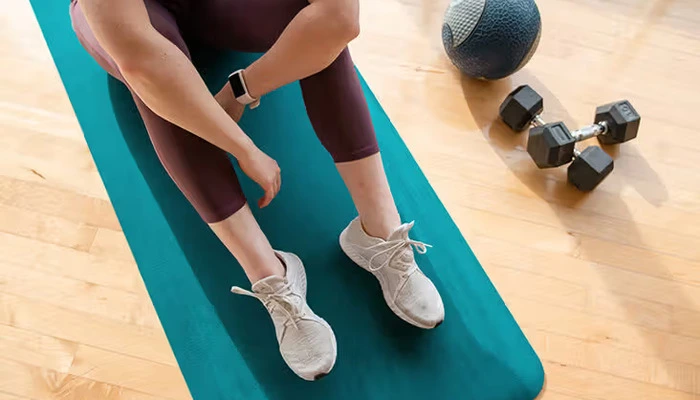Osteoporosis is a disease that causes bones to become fragile and prone to fractures. This condition is especially prevalent among the elderly. While there are medications available for treatment, incorporating basic activities into daily life can significantly improve bone health.
What Is Osteoporosis?
Often referred to as the “silent thief of bones,” osteoporosis occurs when the body loses or produces too little bone tissue, leading to decreased bone density. According to a study published by StatPearls, the condition often goes undetected until a fracture occurs, typically in the hip, spine, or wrist. While it primarily affects older adults, particularly postmenopausal women, osteoporosis can impact individuals of any age or gender.
The Role of Exercise in Managing Osteoporosis
Regular exercise is crucial for maintaining bone and joint health. Weight-bearing activities such as walking, jogging, dancing, and weightlifting are particularly beneficial. A study published in the journal Missouri Medicine highlights that these exercises put stress on the bones, stimulating the body to build new bone tissue and increasing density and strength. Fitness expert Mahesh Ghanekar emphasizes that physical activity not only supports bone health but also enhances muscle strength and flexibility, which are essential for preventing injuries.
Effective Exercises for Osteoporosis
Here are some exercises that can help strengthen bones and reduce the risk of fractures:
1. Walking
Walking is an excellent low-impact workout for people with osteoporosis. As a weight-bearing exercise, it stimulates bone tissue growth and increases density, particularly in the legs, hips, and spine. It also improves balance and coordination, crucial for reducing fall risks.
2. Stair Climbing
Stair climbing is another beneficial weight-bearing exercise. Ascending stairs places stress on the bones, particularly in the legs and hips, stimulating joint growth and increasing bone mineral density. It also enhances balance and coordination. Start slowly and increase intensity to avoid injury.
3. Wall Push-Ups
Wall push-ups are a great way to strengthen upper body muscles. By pushing against the wall, you perform a weight-bearing exercise that stimulates bone growth and increases density in the arms and shoulders. To perform wall push-ups, stand an arm’s length from the wall, place your hands at shoulder height, and push your body closer to the wall.
4. Seated Leg Lifts
Seated leg lifts are effective for strengthening the core and lower body. This exercise is gentle on the bones and improves balance. Sit on the edge of a chair and lift one leg until it’s parallel to the floor, hold for a few seconds, and then lower it back down.
5. Seated Arm Circles
Seated arm circles improve shoulder mobility and flexibility. This exercise can reduce stiffness and pain. Sit upright in a chair and extend your arms to the sides. Make small circular motions, alternating directions after a few repetitions.
6. Bicep Curls
Bicep curls are weight-bearing exercises that strengthen the upper arms and shoulders. This support helps reduce the risk of fractures. Hold a light weight in each hand and curl the weights toward your shoulders, then lower them back down.
7. Squats
Squats are a powerful compound exercise that engages multiple muscle groups. They stimulate growth and increase bone mineral density, particularly in the legs and hips. To perform a squat, stand with feet shoulder-width apart and lower your body as if sitting back into a chair, then return to the starting position.
Safety Considerations
While exercise is crucial for bone health, it’s essential to be mindful of potential side effects, such as muscle soreness, joint pain, and fatigue. To exercise safely:
Consult a healthcare professional: Always check with your doctor or a physical therapist before starting a new routine.
Start slowly: Begin with low-impact exercises and gradually increase intensity and duration.
Listen to your body: Pay attention to how your body responds and avoid overexertion.
Maintain proper form: Ensure correct technique to prevent injuries.
Choose low-impact exercises: Opt for exercises like walking, swimming, and yoga to minimize fracture risks.
Finally
Incorporating these exercises into your routine can help improve bone health and reduce the risk of fractures for those with osteoporosis. Always consult your healthcare provider to tailor a safe and effective exercise plan that suits your needs.
Follow us on Google News, Instagram, YouTube, Facebook, Whats App, and TikTok for latest updates
